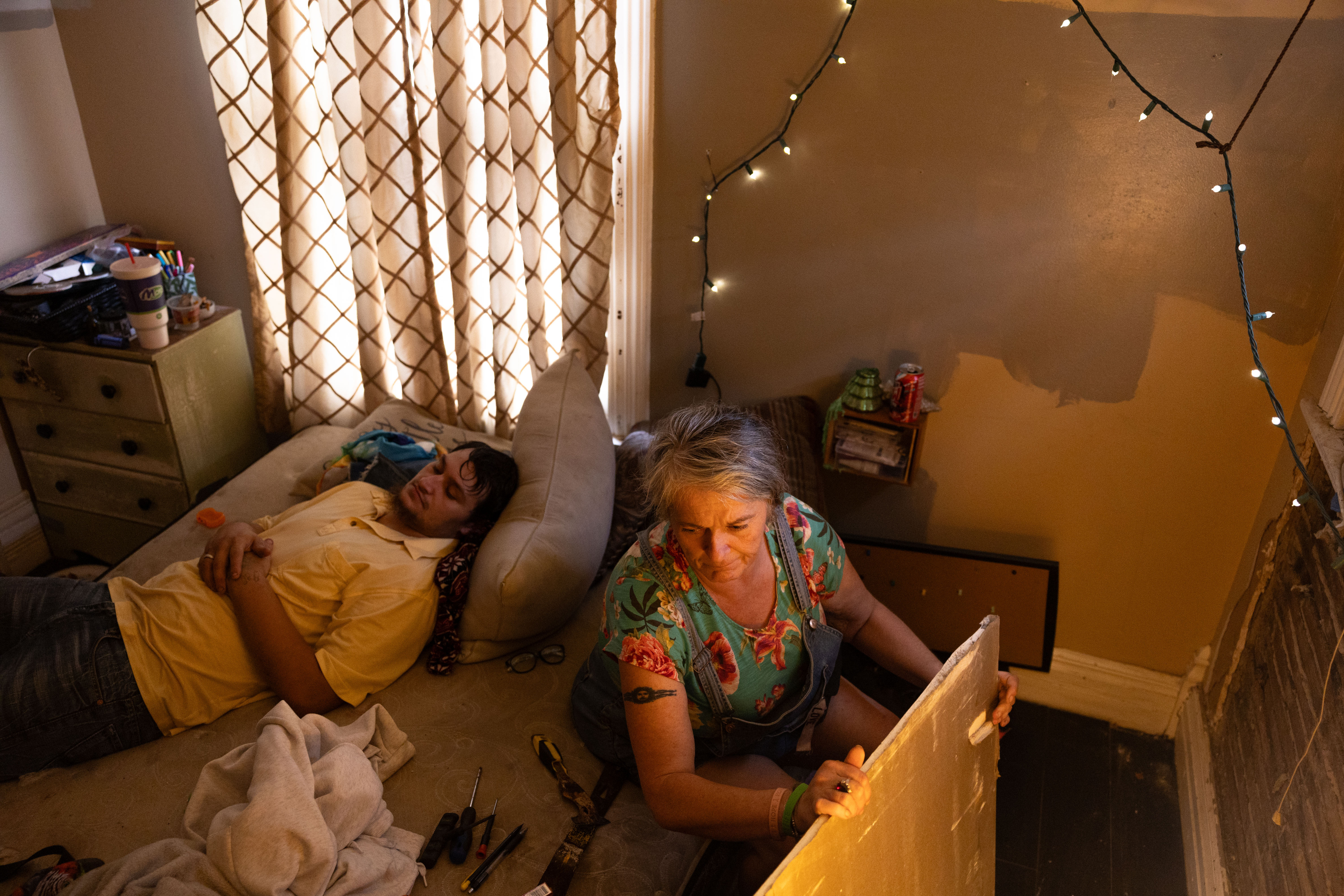A Window Into Editing the Missouri Photo Workshop Community Exhibit
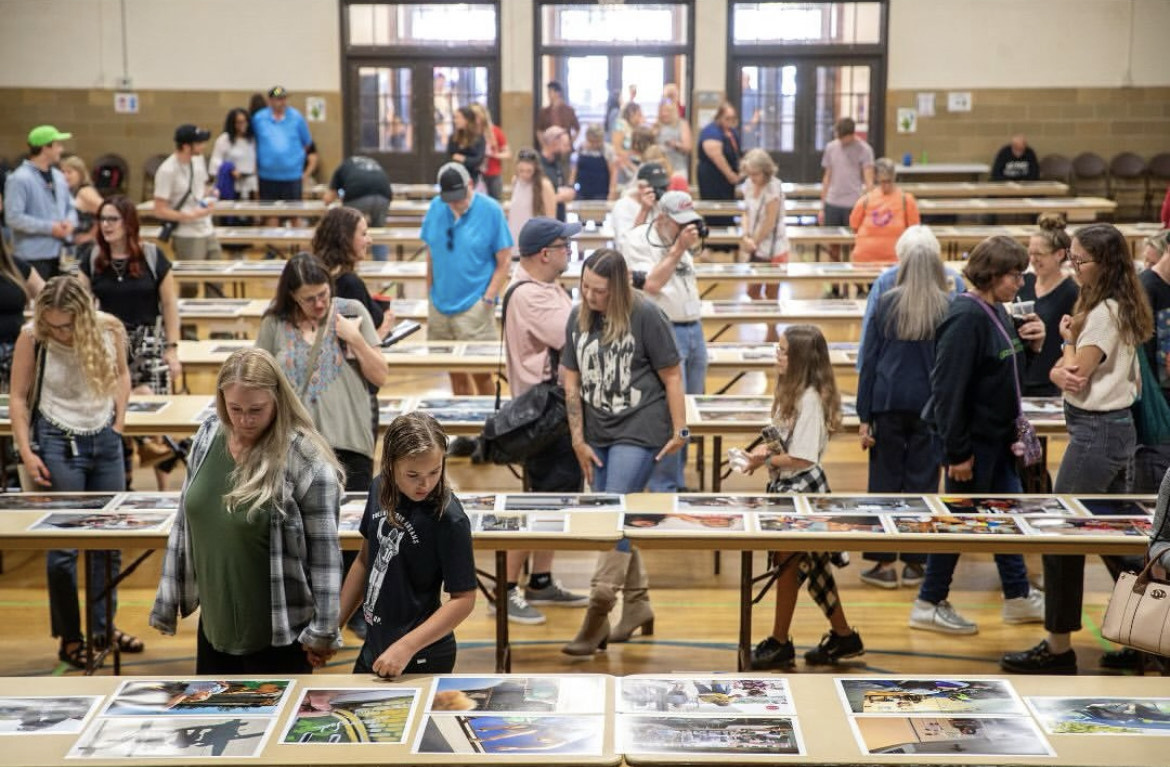
photo by Yong Li Xuan
by Michelle Gutierrez and Nicole Gutierrez
mpw.77
Union, Mo.
38 photo stories/photographers
about 15,000 photographs
350+ prints
3 printers
1 week
For the past 77 years, about 40 photographers have come to a small Missouri town at the end of September to participate in the Missouri Photo Workshop. Photographers pitch photo stories to their faculty, renowned editors and photographers, before photographing their stories in 400 frames or fewer. At the end of the week, a community photo exhibit showcases the photo stories. This is where we came in.
This year was our fourth year on crew, but first as exhibit editors. While the faculty focused on approving pitches, mentoring photographers and making final edits, we concentrated on editing and overseeing the printing of over 350 images. Having so many printed by the end of the week meant we had to begin making decisions on edits while the stories were ongoing.

photos by Nicole Gutierrez and Yong Li Xuan
We spent all of Sunday preparing for the week. We trained crew members in various positions such as vortex, concierge and webmaster and established a workflow for editing and printing.
On Monday, we continued training others and dipped our toes into editing as the first cards rolled in. Photographers were out photographing test cards - an opportunity for them to engage with the community with their camera while finding their stories. For us, it meant an opportunity to select singles for the exhibit.
Around 30 stories were approved by the end of the day on Tuesday and the first story images came in. We focused on printing the final singles and selecting the strongest images for approved stories. In the midst of editing, we quality checked each print and guided the printers on toning.
On Monday, we continued training others and dipped our toes into editing as the first cards rolled in. Photographers were out photographing test cards - an opportunity for them to engage with the community with their camera while finding their stories. For us, it meant an opportunity to select singles for the exhibit.
Around 30 stories were approved by the end of the day on Tuesday and the first story images came in. We focused on printing the final singles and selecting the strongest images for approved stories. In the midst of editing, we quality checked each print and guided the printers on toning.

On Wednesday, things began to ramp up. We continued to select the strongest images from the photographers' takes. By evening, we started putting edits together and had two more printers jump in. The final stories had been approved and we were also adapting to stories that had changed entirely. By evening, we worked on edits separately while still looking at each other's final printing choices.
Thursday, we arrived at 6:30 am to get a head start on our day. We wanted to get photos on the queue for printers to try to even out their day’s workload. It was common to be busiest in the evenings, following many people dropping their cards midday and at the end of the day.
To finish printing at a reasonable time on Friday and catch up on evening card drops, we edited until around 1:45 am. We wanted to build up the printers' queue for the morning and to get about half the stories close to completion. We had to treat Friday's photos as finishing touches for the majority of stories since photographers had a noon deadline for dropping their final cards.
Thursday, we arrived at 6:30 am to get a head start on our day. We wanted to get photos on the queue for printers to try to even out their day’s workload. It was common to be busiest in the evenings, following many people dropping their cards midday and at the end of the day.
To finish printing at a reasonable time on Friday and catch up on evening card drops, we edited until around 1:45 am. We wanted to build up the printers' queue for the morning and to get about half the stories close to completion. We had to treat Friday's photos as finishing touches for the majority of stories since photographers had a noon deadline for dropping their final cards.
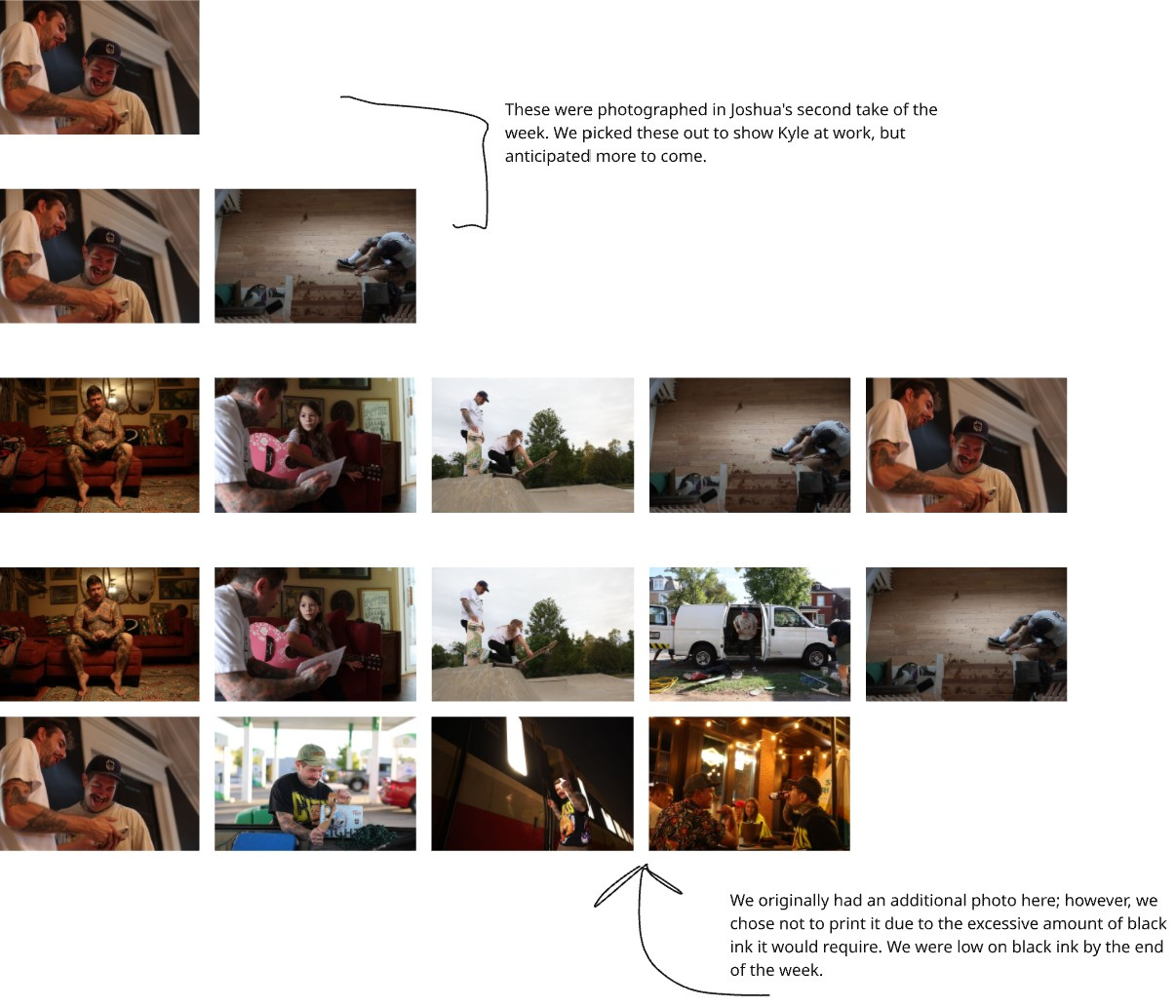
photos by Joshua Carter
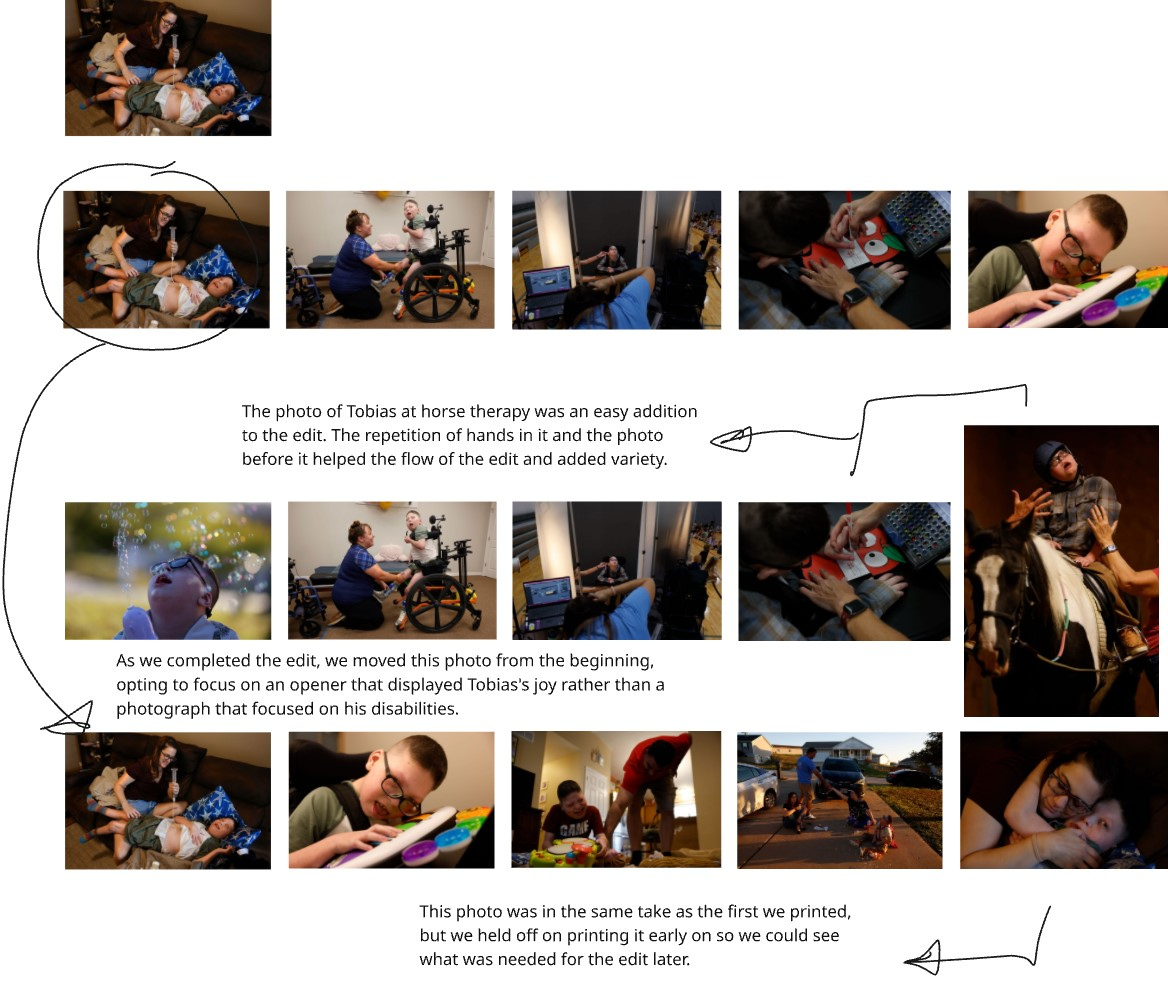
photos by Lylee Gibbs
Friday, we arrived at around 6:30 am to pick up where we left off just a few hours earlier. It was time-consuming to switch our attention to another story while trying to finish an edit, so when we were stuck, it was helpful to have second opinions to nail down an edit. One of our favorite parts of the week was seeing the edits come together.
We finished editing at around 11:30 pm and began sequencing the prints with the printing team after the final batch of photos was printed. We then headed over to Union City Auditorium to lay out the stories for the exhibit. We returned to headquarters to prep the title card template at about 3:30 am before catching a couple of hours of sleep.
Saturday morning, we joined the printers in creating title cards with story titles and photographers’ names at around 8:15 am. With that, we grabbed an extra table and went to the auditorium to set up the title cards and double-check the sequences and layouts. Just before 10:00 am, the community, photographers and crew members started rolling in. At around 2:00 pm, we packed up the photographs to join the Missouri Photo Workshop archive.
We finished editing at around 11:30 pm and began sequencing the prints with the printing team after the final batch of photos was printed. We then headed over to Union City Auditorium to lay out the stories for the exhibit. We returned to headquarters to prep the title card template at about 3:30 am before catching a couple of hours of sleep.
Saturday morning, we joined the printers in creating title cards with story titles and photographers’ names at around 8:15 am. With that, we grabbed an extra table and went to the auditorium to set up the title cards and double-check the sequences and layouts. Just before 10:00 am, the community, photographers and crew members started rolling in. At around 2:00 pm, we packed up the photographs to join the Missouri Photo Workshop archive.
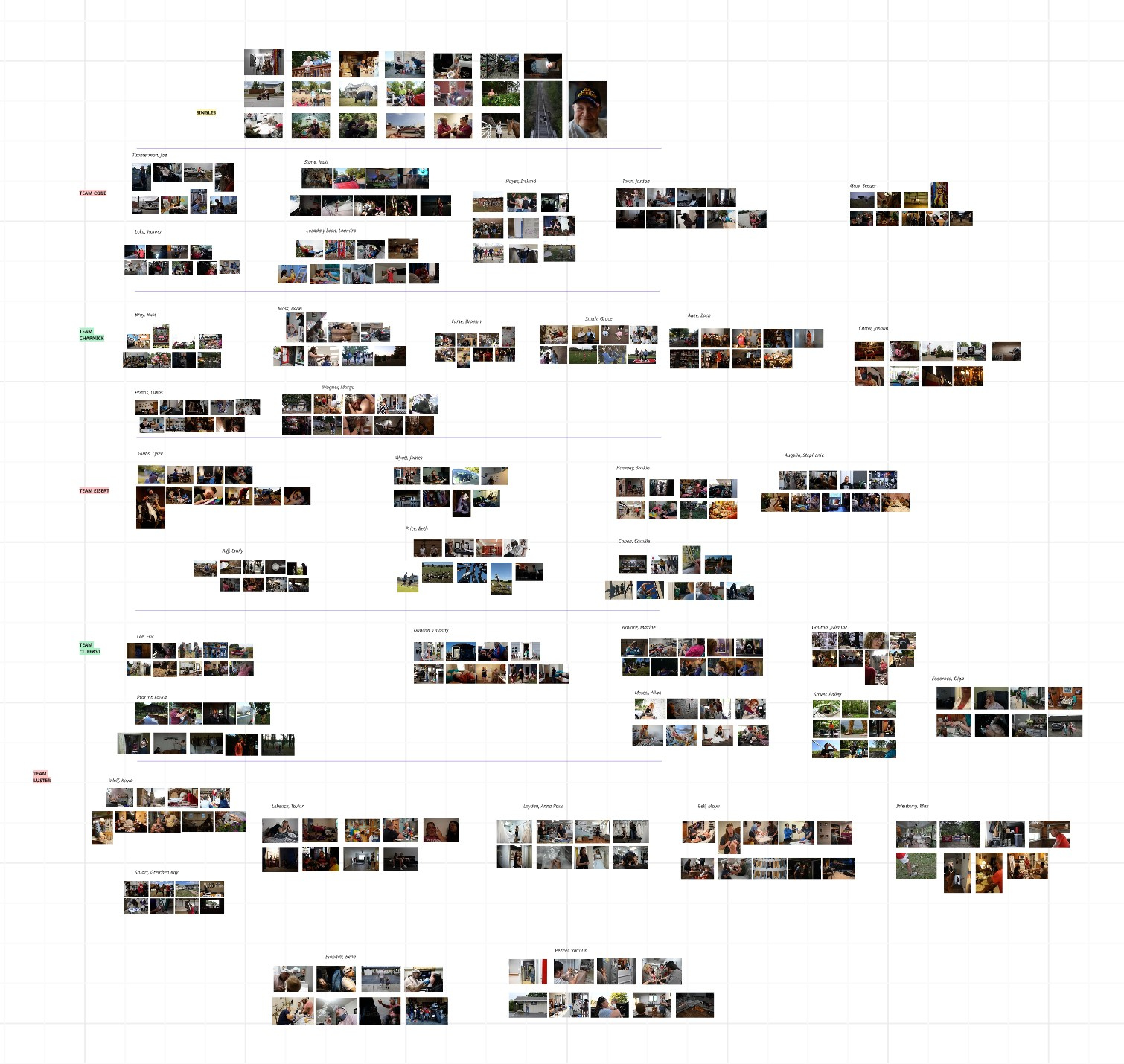
Above is a Miro board where we kept track of which photos we sent to the printers. While we culled and sequenced in Photo Mechanic, this was where we kept a record of the sequences ahead of setting up the exhibition.
How to edit an exhibit
Time and Resource ConstraintsTo get each story printed in time, we needed to start selecting images early in the week. We had to commit to our choices even if a photographer were to reshoot something later in the week. Below, the pictures to the left of each pair we had printed early in the week. The pictures to the right came in at the end of the week that we didn't get to include in our edits. We couldn't afford to replace the earlier prints due to time and ink resources.

photos by Margo Wagner

photos by Matt Stone
Storytelling and Patterns
Prioritizing strong storytelling images and recognizing visual patterns helped guide our quick decision-making and bring stories together as they evolved throughout the week. We paid attention to shape, color, repetition and more to carry the stories and our choices forward.
Prioritizing strong storytelling images and recognizing visual patterns helped guide our quick decision-making and bring stories together as they evolved throughout the week. We paid attention to shape, color, repetition and more to carry the stories and our choices forward.
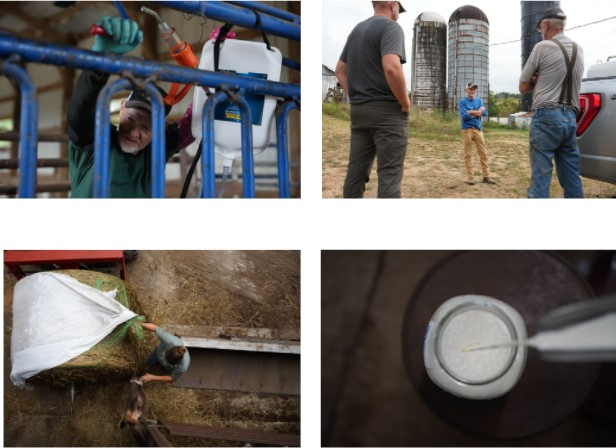
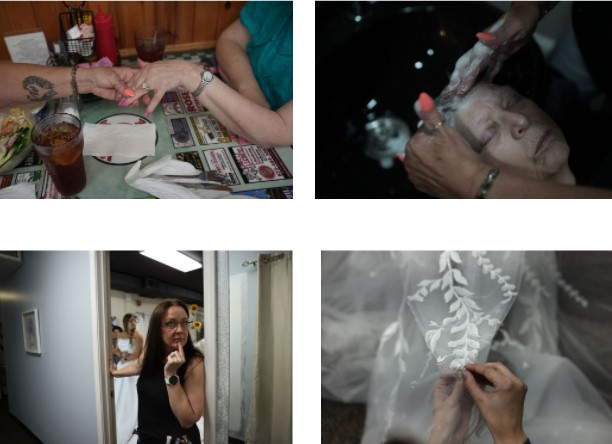
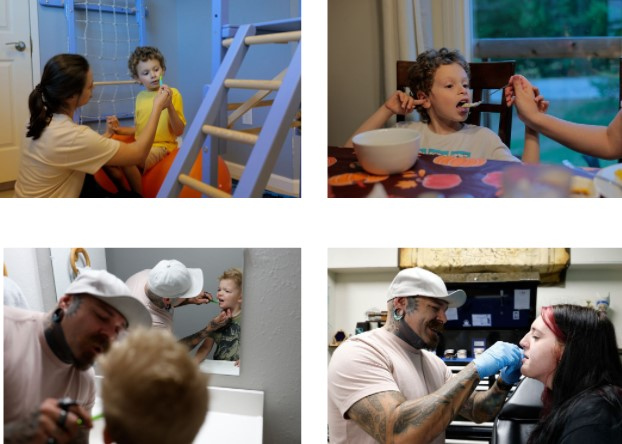
Adapting and Knowing Your Audience
There were no captions or story summaries at the exhibit. The only text provided with the photographs was the photographer's name and story title.
The purpose of the stories we edited was to reflect the community. These stories were not centered around issues, but rather around the people of Union.
There were no captions or story summaries at the exhibit. The only text provided with the photographs was the photographer's name and story title.
- Early in the week, we relied on the photographers' declarative sentences, a short summary of their story. By the end of the week, we relied more upon the story the photographs were telling.
- We balanced when to lean into a more straightforward editing approach and when to trust the audience to see the story in the edit.
The purpose of the stories we edited was to reflect the community. These stories were not centered around issues, but rather around the people of Union.
- In the midst of lighthearted stories such as Jean and her butterflies, there were also stories of struggle, such as the Larsen family navigating their reliance on the SNAP program. In these, we aimed to balance the hardship with perseverance and happiness. Along with the photographers, we did our best to showcase the varying complexities and nuances of the people and their community.

photos by Zach Agee

photos by Jordan Tovin
Exhibit Thoughts
Editing while stories were evolving was challenging yet incredibly rewarding. The experience has transformed and challenged how we edit and think about editing. After piecing together 38 photo stories, we recognized our editing habits and became more confident in our decision-making. Skills that will not only help us make edits with final takes but also to work with photographers while they photograph. We’ve learned to trust our instincts and how and when to balance storytelling and tone-setting images to benefit the edit as a whole. While one photograph may not convey much on its own, combined with others, it can be critical to a story.
Every year of the workshop, the community exhibit is always our favorite part. Witnessing the community react to their stories and their neighbors' stories always reminds us why we do journalism. It’s an incredible opportunity to see how significant and impactful photojournalism is through the community's live reactions. Moments like someone quieting the room to thank photographers and crew for their work, to children pointing out themselves in photographs, are always rewarding. Additionally, following along with the making of each story so closely, the exhibit felt extra special as the people we had gotten to know got to see themselves and others in the photographs.
Edited with Michelle Gutierrez
Printed by Michael Baniewicz, Jacob Luebbert and Sophie Chappell
Special thanks to Brian Kratzer, Greg Kendall-Ball and the wonderful crew
Editing while stories were evolving was challenging yet incredibly rewarding. The experience has transformed and challenged how we edit and think about editing. After piecing together 38 photo stories, we recognized our editing habits and became more confident in our decision-making. Skills that will not only help us make edits with final takes but also to work with photographers while they photograph. We’ve learned to trust our instincts and how and when to balance storytelling and tone-setting images to benefit the edit as a whole. While one photograph may not convey much on its own, combined with others, it can be critical to a story.
Every year of the workshop, the community exhibit is always our favorite part. Witnessing the community react to their stories and their neighbors' stories always reminds us why we do journalism. It’s an incredible opportunity to see how significant and impactful photojournalism is through the community's live reactions. Moments like someone quieting the room to thank photographers and crew for their work, to children pointing out themselves in photographs, are always rewarding. Additionally, following along with the making of each story so closely, the exhibit felt extra special as the people we had gotten to know got to see themselves and others in the photographs.
Edited with Michelle Gutierrez
Printed by Michael Baniewicz, Jacob Luebbert and Sophie Chappell
Special thanks to Brian Kratzer, Greg Kendall-Ball and the wonderful crew
After the workshop, we had the opportunity to edit a story without exhibit constraints. Below is a story of Carrie Kuhl and a look into how she navigates hardships and finds solace.
